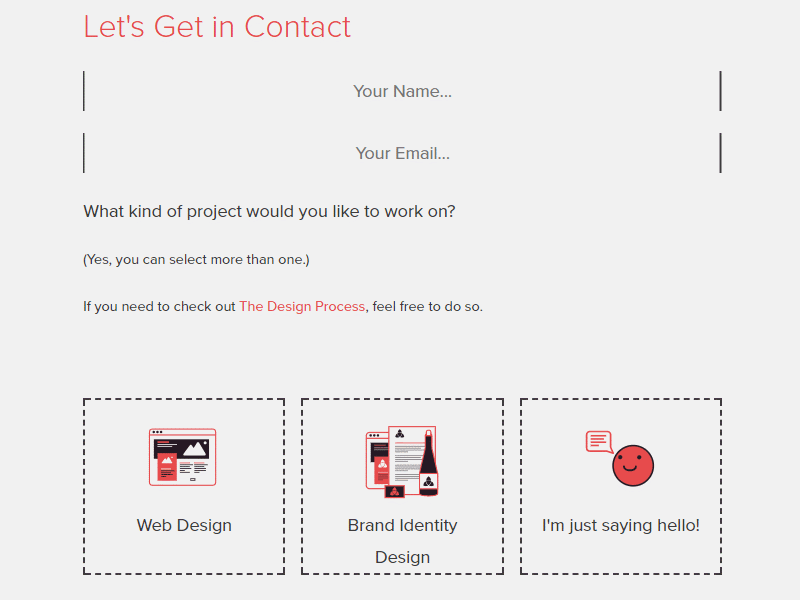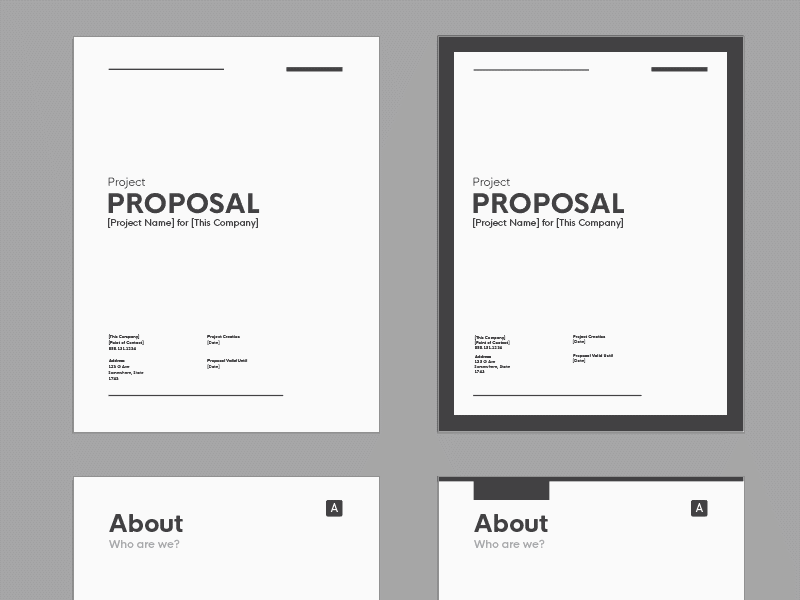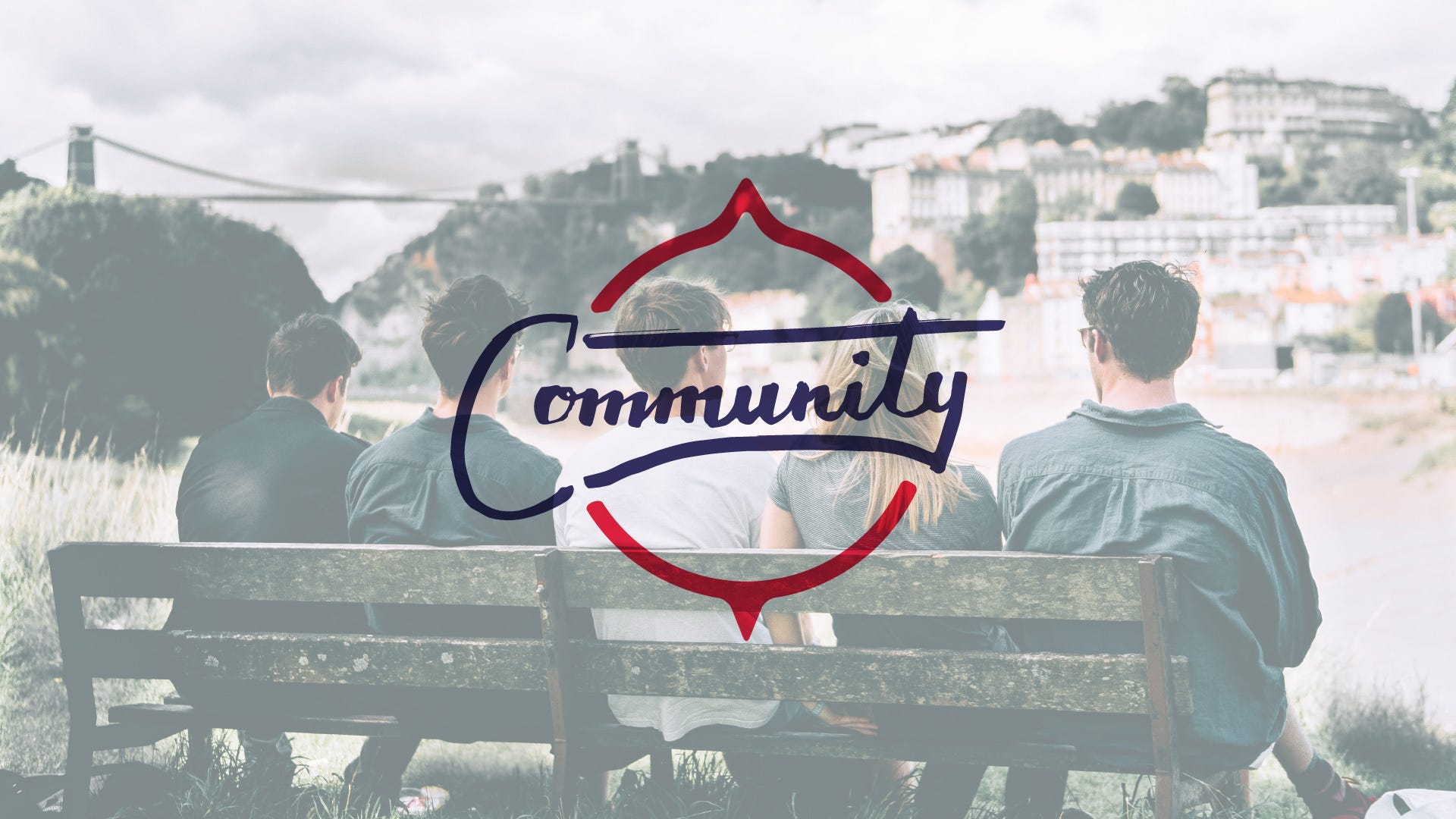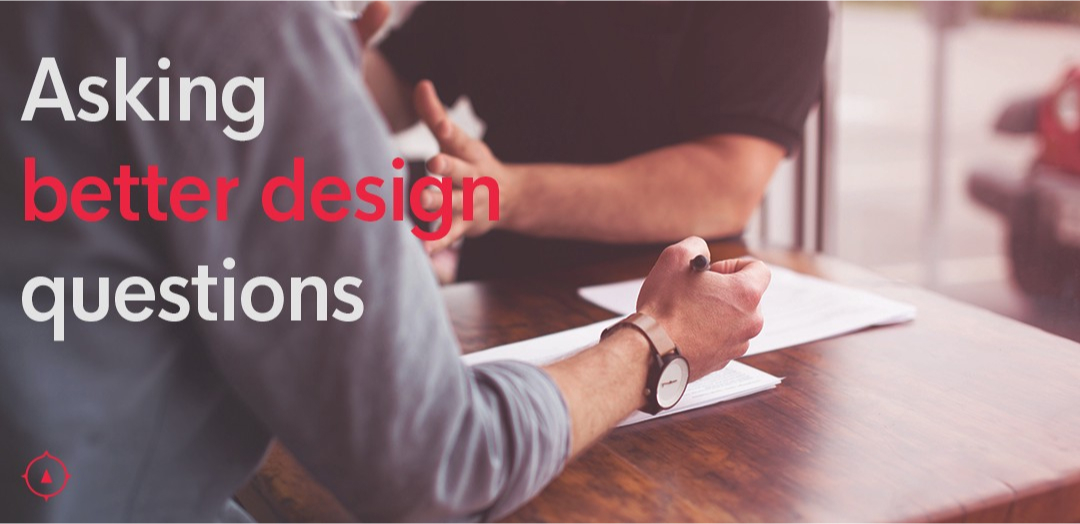A great designer can be measured by the quality of questions they ask. It’s not the defining characteristic, but having an arsenal of great questions to ask helps ensure that you are able to do the best work you can possibly do and have the client on the same page as you.
Why do we need to ask better questions?
Every one of us in the realm of design come from different design backgrounds.
Some of you are working for agencies, some of you are mom-and-pop design agencies yourself. Others are either a sole-designer or designer at a non-design company, developers, and marketers.
But if we’re all in agreement on something, it’s that we need to understand the ins and outs of our projects we are working on before we touch any of our tools.
So how do we figure out what we need to know?
If you have worked in the past as a freelancer, you eventually find out that you have to start asking really good questions or forever be burned with what is called “scope creep.”
A project scope can get wildly out of hand while working on things for clients. This can be because the person doing the design work (you), the person passing the information to you (project managers, parent agencies), or even the client are inexperienced with the design process.
I have worked both as an independent designer for nearly 2 years, and as a in-house designer for a dev agency. I have asked enough questions to get a good working list to go through when onboarding new clients.
We can kill scope creep by taking account for the nuances that pop up early on, or even later on, in the project.
This is done by asking really good questions up front.

Keep one step ahead of the project.
Think you know where the bottlenecks and traps are?
What you are looking at above is my sketchbook for my personal branding projects for Compass and So Magnetic (and really it’s a fraction of the questions I ask with clients.)
At times, it looks more like I’m a writer/copywriter than a designer because I can have 2–4 pages of notes and 1–2 pages of sketching.
You want to know as much as you possibly can about a project’s scope before starting any of the work. A lot of the questions will be tied around your design discipline, your chosen design process, and your project’s goals.
Understanding a project is a vital part of what we do in the design industrial. For us to be able to deliver on a project in a way that addresses a specific need and delivers value to it’s audience, you have to be able to ask great questions.
So what makes a great question?
That is a great question! (my third time making this pun and I’m not even sorry for it this time).
The reason a question is asked is to get valuable information that you otherwise couldn’t obtain. The quality of that value is determined by how effective that information is for what you need. Your goal is aiming these questions towards getting an open ended response, not just a binary ‘yes’ or ‘no.’
It is important that you know the distinction between these types of questions and their proper uses.
Asking open ended questions for the intent of obtaining specific information has to become second nature to you.
There are questions that may seem open ended but are really just filler questions. Those ones like “What do you want for dinner?” or “What is your favorite color?” usually equate to single response answers. (BTW: pizza and forest green #424f42)
There is a sweet spot between a completely open ended question and the binary yes/no questions.
You have to target that question towards the exact information you need to find out. So questions like “What are your existing brand assets” will net you a list of things you have to design for.
Filler questions don’t address the needs for you or your client, so make sure that the question is tied to your process in some way.
What to ask clients when you start the onboarding process.

What questions do I ask my prospects?
This works for both referrals and new leads
I have been taking on client work for the past 2 years. And in those two years, my process has been knocked around so much that I’ve been rebuilding it constantly as I go along.
As I go through and set up my agency website for mgntc.co I figure that I need to revisit my design process and questionnaire.
I use a client questionnaire as the entrance point for cold/warm leads who visited my personal website. You can see that here if you want. This questionnaire we went through in depth with people from the Compass of Design Community weeks back. So I’m happy o have it where it is.
This questionnaire wouldn’t have worked when I first started out as a designer.
There just wasn’t enough jobs coming in and almost all of those in that first year were direct referrals with design work that wasn’t related in my field of design.
(maybe one day I’ll talk about that experience because there’s a lot of work I can’t show on my portfolio).
A client questionnaire is great to use as a filter when you are getting more inquiries from prospective clients in order to weed out those who might not be great to work with.
For direct referrals, I don’t send them to the contact form on the page, I’ll call them directly to find out more about their project. However, the questions that I ask both are the same.
Here’s what I look for when asking questions
(you can feel free to message me and ask more about them too) Obviously, if it’s a contact form they are filling out, you can start or end with contact information. But do make sure you grab their name, their company/brand, the best way to contact them, and where they heard of you.
1. Name
2. Contact email
3. What kind of project they are looking to do
4. How they found me
These first few are obvious. 3 & 4 you want to allow them to say multiple things. There might be more opportunities for more work both with what they need to do, and where they found you in the first place.
The next few questions after that I ask are about them and the work they do. I am trying to get a feel on if I’m familiar with the stuff they do, and what their excitement level is for their upcoming projects are.
5. What kind of work does your organization do? What excites you most about it?
I ask this because I want to see how passionate they are doing the work they are doing. It’s a good indicator of how serious they are with their inquiry
6: How does your approach differ from others?
Figure out how they try to set themselves apart from their competition other than design. This can give you an insight if they really know their other competitors much and have a clear advantage you can leverage in your design
7. How big is your organization?
I give them a few options as brackets: 1–10, 20–50, 50–100, 100+; It gives me an idea of how much value the project is to them and what size the scope of work I’m going to be designing for is. You can gauge this if it’s valuable because they come to you instead of doing it internally
8. What audience is your organization focused on serving?
This is helpful because you need to know who you are designing for
9. How do people find out about your organization?
This can be a good indicator of what else you might be able to do design for.
The next set of questions dives deeper into the attributes of the company, again this can give you an idea of things you might be able to do visually, but also what things will help you improve your understanding of what they are here to do.
10. What attributes does your company value
Another indicator you can use to gauge your design
11. Which does it value the most?
This will be one of the defining characteristics of your design.
12: In what ways would you describe the personality of your brand?
Again, for the reasons above.
13: What are some brands in your industry that stand out to you?
Gives you an idea of the size, style, and authority of the design you should be shooting for.
These last few are sometimes really process specific, so think of the things during your process that you need to find out to do the type of design work you need to do. Make sure you ask questions regarding your tools, delivery method, etc. For now, I’ve cut them out of this list.
14. Is there a special event or launch date that is going to drive the deadline of this project?
This is a really good indicator of how much time you have and what you might have to charge for it to be worth it.
15. What does the success from this project look like to you?
Again, we’re deriving value for the client in their mind that your project will help them succeed their goals
16. What is the goal we’re going to solve with your design?
Taking those goals, seeing if there are any more opportunities for more work form the client.
17. Are there existing brand requirements that must be considered?
This kind of tests both of you, a good client will outline some things here, but you gotta gauge if they are going to try to completely art-direct your project for you and if you’re okay with that
18. Have you worked with any designers in the past?
If they haven’t worked with a designer in the past that may be good, but require a bit of hand-holding. If they’ve worked with lots, you are competing with the experience they’ve received from another designer’s process and any shortcomings from that.
19. Are we designing for a local or global audience?
This will help you figure out if what cultures to research in-case something might be offensive or culturally tasteless there.
20. Is there any additional information that needs to be taken into consideration?
Just another important thing to ask in case there really is something you forgot that is important to them.
This is a very exhausting process, and this is where I am currently at. The thing is, I want to eliminate all guesswork and surprises when starting out a design with the client. But there’s one more step to figure out how effective your questions were.

Get confirmation on everything you ask.
Don’t forget to make sure you’re on the same page.
This may surprise you, but communication is a 2-way street.
You have to understand what the needs of the project are, but you also might need to make sure that they understand what you understand. So confirm what you know and match that up to the expectations they have.
IF you fail to do this, you may come back with a racecar when the client needed a bus, a mansion when the client needed a barn, or a winter jacket instead of the shorts and sunglasses your client needed. Basically, you design for the wrong thing.
The easiest way to do this is to craft a project proposal for your client. We will go over this later this month on crafting effective design proposals.
But even throughout the project you should be making sure that you and your client (or project manager) are on the same page with the design.
This may seem tedious but setting up a time where you can reiterate what you heard from them and confirming that is the direction you need to go is a must have.
Though these questions work for me right now in my process as a Brand Identity designer, I hope it can be adapted to you and your process as well.
Remember, these are questions for you to use, and as you build up your process you can eliminate or replace questions here to make sure your onboarding is as effective as possible.
I hope you all stick around for our next part of the client onboarding series.
We’ll be going over
Interacting with potential clients
Facilitating the client by onboarding like a professional
Crafting Effective design proposals
***Part 2*** | Part 3 (soon)| Part 4 (soon)

Want to level up your design skills?
Come join us in the Compass of Design Community to connect with over 60 other driven and motivated designers who are working at being masters of their craft.
We’re running a re-launch discount, so after September 31st, the membership fee will be permanently increased. You can check out everything about the community below.
Every week we go over ways to market yourself better by improving your design skills, your personal brand, and other topics to further develop yourself as a designer. Get around other like-minded and creative individuals to help get yourself in the next step of your design career.
Check out the Compass of Design Community
